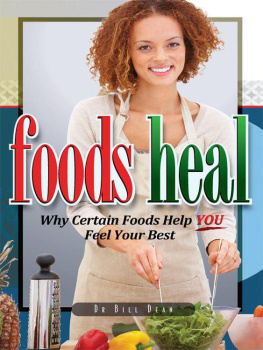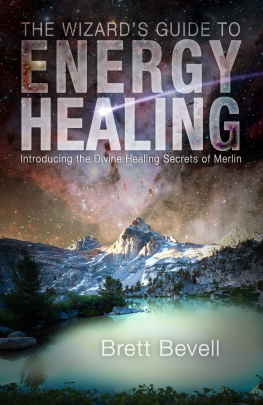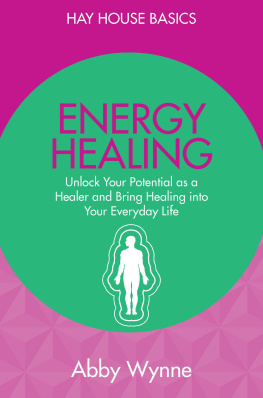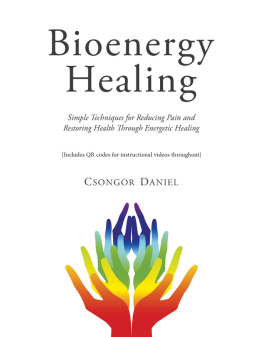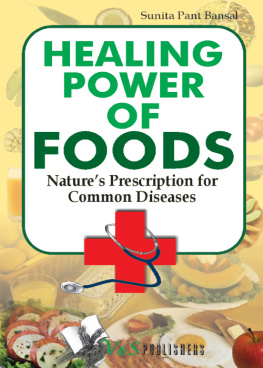

Copyright 2010 Dr Bill Dean
All rights reserved.
ISBN: 1439261989
ISBN-13: 9781439261989
E-Book ISBN: 978-1-61789-338-4
Library of Congress Control Number: 2009910710
dedication
This book is dedicated with all my heart to my loving wife, Diana, and to my parents who gave me life and taught me the value of discipline and consistency. And that courage and perseverance allows anyone to create anything they want to see in their lives.
acknowledgements
THANKS TO ALL MY MATTER SCIENCE HEALERS AND TEACHERS WHO TAUGHT ME ABOUT THE SCIENCE OF HEALING IN MEDICINE AND SURGERY
AND THANKS TO ALL MY ENERGY SCIENCE HEALERS AND TEACHERS
Dr Vasant Lad, for his insatiable love and teaching of Ayurveda; without his help and guidance this work would not have been possible
Ed Danaher and the Ayurvedic Institute family for their teaching and support in my healing and for their ears
Deepak Chopra, for being the biologic Einstein in the 21st century introducing me to Ayurveda and being a sentinel for seeing the mindbody in an entirely different way
Amrit Desai who helped me see experientially that the mindbody is an energy field
David Simon and the Chopra Center family who served as a spark
Kelly and ladies for their support for our patients and the office
Viki King, who has shown me how important a voice is and to trust my expression
Buddy Sears, for visual and technical life to the material
Katie Doull for her loving support and beautiful artistry
To the CreatingSpace folks and their support in making this work a reality
To the Ayurvedic healing community
My patients who did the work and showed that changing their nutritional habit patterns could lead to resolution of disease
And lastly to disease in my own energy mindbody physiology which through witnessing awareness has become my greatest teacher
In gratitude from Dr Lad for use of material from his books, Textbook on Ayurveda, Volume I and Ayurvedic Cooking for Self Healing
foreword
According to the ancient system of medicine, Ayurveda, man is composed of innumerable channels called srotamsi. These pathways of srotamsi are different systems that perform unique functions from digestion to endocrine. The smallest functional unit of an organism is the cell, a subtle srotas or pathway. In a multicellular organism, cells have many sizes and shapes. When there is a change in function, there is a change in structure including size and shape. Even though there are different types of cells in the human body, they all share similar fundamental structural characteristics. Each cell contains the same five basic elements such as I) cell membrane, the earth element, 2) the cytoplasm, the water element, 3) nucleic acids and amino acids, the fire element, 4) the cellular respirations, O2 and CO2, the air element, and 5) a defined cellular space, the ether element.
The cytoplasm is the protoplasmic biological liquid substance corresponding to the rasa dhatu, plasma tissue, which surrounds the nucleus and the cell membrane. Within intercellular space there is also a fluid containing the food precursors of all bodily tissues called ahara rasa, the microchyle, which is the superfine essence of digested food. This cytoplasmic liquid stores food such as carbohydrates, proteins and lipoids and these correspond to kapha dosha. The nucleic acid and radiant heat within the cell, which maintain cellular metabolic activities, correspond to pitta dosha. Cellular respiratory functions with O2 and CO2 and the movements of cytoplasm correspond to vata dosha. Along with these biological factors, cytoplasm also contains hemoglobin, melanin pigments, vegetables, carbon, silver, iron and other heavy molecules of lead, mercury and arsenics.
The nucleus is generally a round structure situated at the center of the cell. Its size, shape, position and numbers vary accordingly. At times, the nucleus may contain many lobes. Most mature cells contain a single nucleus but there are certain large cells in the human body that contain many nuclei like muscle cell. If the nucleus is removed, the cell dies. An exception is red blood cells, which carry oxygen but have no nucleus. In most cases, the nucleus carries out the life functions of a single cell. It is the seat of consciousness and the cellular mind, according to Ayurveda. This nucleus also contains RNA and DNA molecules. They are the blueprints of hereditary factors. RNA carries the genetic information in the form of a code. RNA is formed in the strands of DNA within the nucleus. The strands of DNA direct the synthesis of specific RNA. RNA carries the messages of DNA into the cytoplasm through ribosome. There are 20 specific RNA for 20 specific amino acids. They correspond to the 20 gunas (qualities) in Ayurvedic medicinethe 10 pairs of opposites. Some of these qualities are guru (heavy) and laghu (light), manda (slow) and tikshna (sharp), shita (cold) and ushna (hot), etc. With the help of RNA, specific qualities of food substances yield into the cytoplasm where the energy of the food becomes matter. For example, outside of the cytoplasm there are lifeless molecules of food, water and air. The moment these molecules enter the cell into the cytoplasm, they become a part of life. RNA governs this transformation of lifeless molecules into the molecules of life. These 20 qualities are 10 pairs of opposites that yield into the cellular consciousness.
Every cell in the body is a functional unit of consciousness. Each and every cell is a center of awareness. Every cell has cellular intelligence. What is true for the creation of the universe, according to Sankhya philosophy, the philosophy of Ayurveda, is true for the microscopic life of a single cell. Following Sankhya philosophy, one could say that the conscious principle in the cell is Purusha, unbounded pure consciousness. The structural component of the cell is Prakruti, infinite creative potential. The cellular intelligence is micro-Mahat (supreme cosmic intelligence) and every cell has Ahamkara (the I-former), which maintains cellular form and shape. Every cell has consciousness, intellect, and a cellular mind in the form of choice or selectivity. We carry the cellular memory of our great-grandparents and their propensities for illness. There is a constant flow of intelligence (tejas) and flow of communication (prana) and every cell has its own cellular immune mechanisms (ojas). So the subtle essence of the tissuesojas, tejas and pranaoperate at the cellular level.
Dr Bill Dean has beautifully explained these subtle bodily mechanisms with his wonderful concept of the MindBody Energy Field. The mindbody is a complex, multilayered vibrational energy field. The bridge between mindbody mechanisms are the 20 gunas that yield into the cytoplasm. That is why what happens in the body, happens in the mind via the media of specific doshic imbalance through both qualitative and quantitative changes between the dosha and gunas within each and every cell. This is because mind is in every cell of the body. Conscious mind works at the level of the sensory and motor systems, but subconscious mind operates via the sympathetic and parasympathetic systems. That is why the hot and sharp penetrating qualities of a food such as chili peppers can make the mind become judgmental, critical, and irritable. On the other hand, the gross, heavy, dull, and cold qualities found in a food such as cheese or ice cream cause the mind to become heavy, dull, depressive, and/or sleepy. This is a great discovery of Ayurvedic medicine that there is a deep connection between mindbody mechanisms via the qualities of doshas through food, environment and seasons. The energy model of nutrition and molecules of energy expression are clearly explained by Dr Dean in this book. He gives a new dimension of perception at a practical clinical level. This book will be a guide to both students and teachers of Ayurveda and of modern medicine.
Next page
